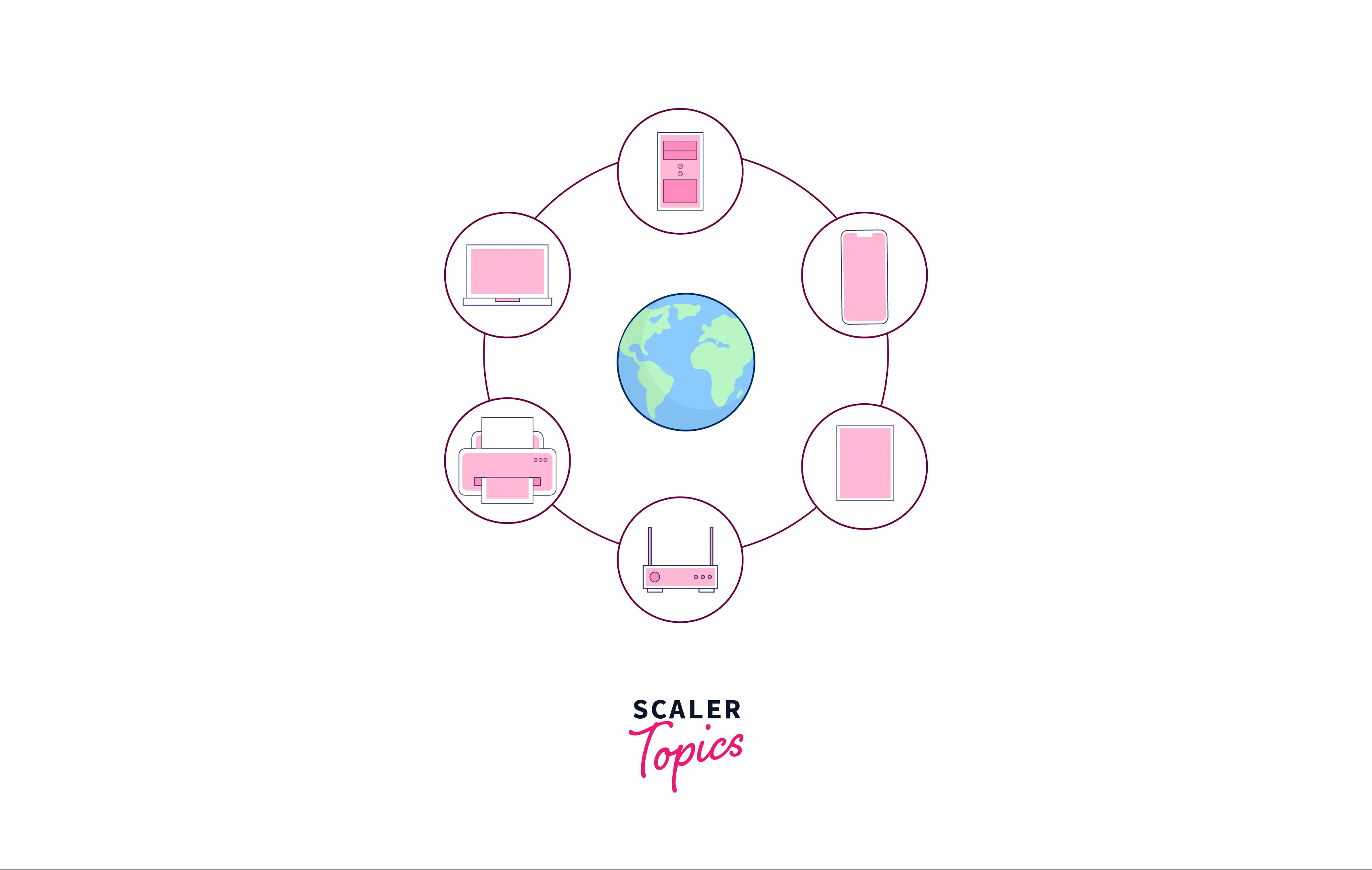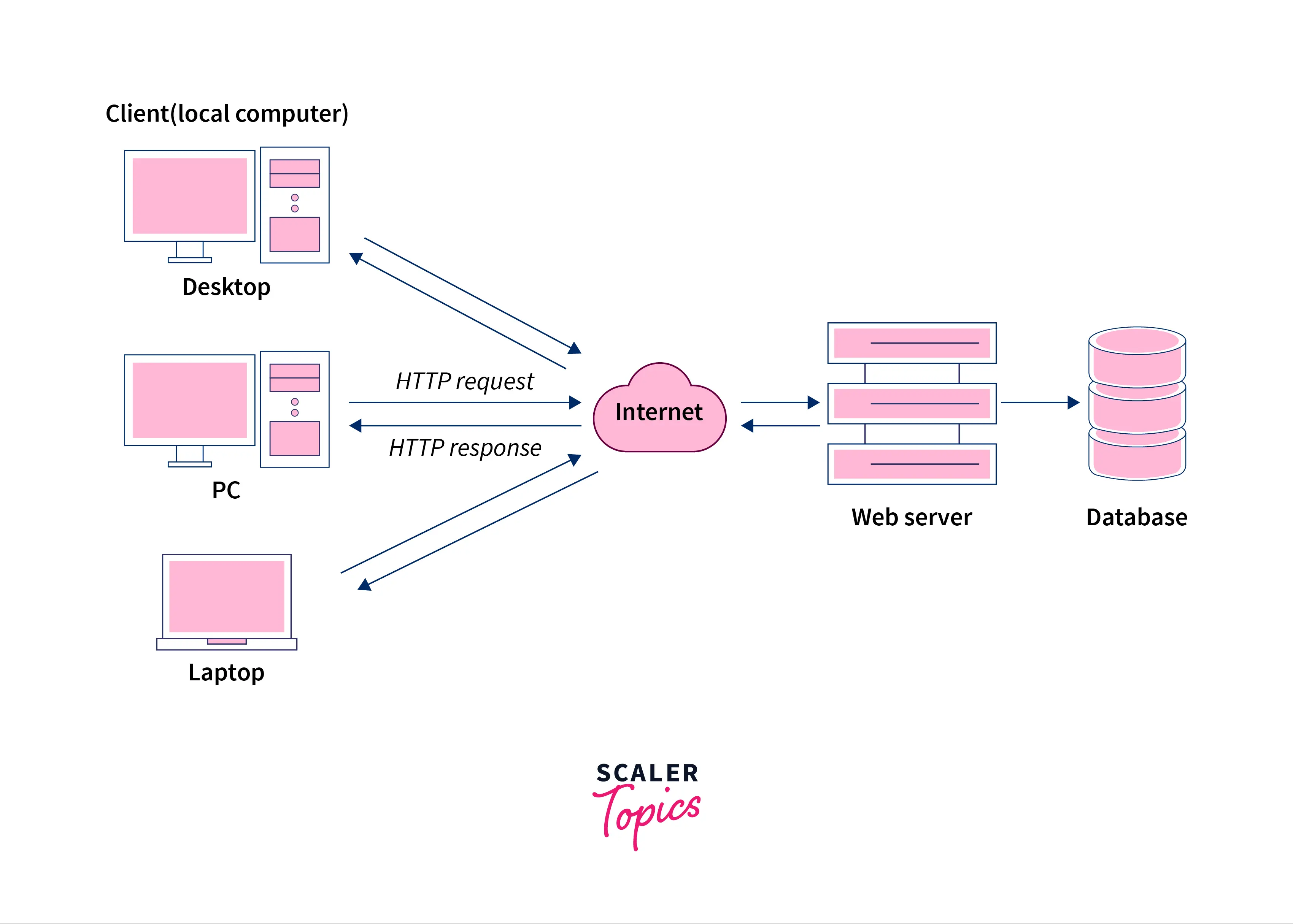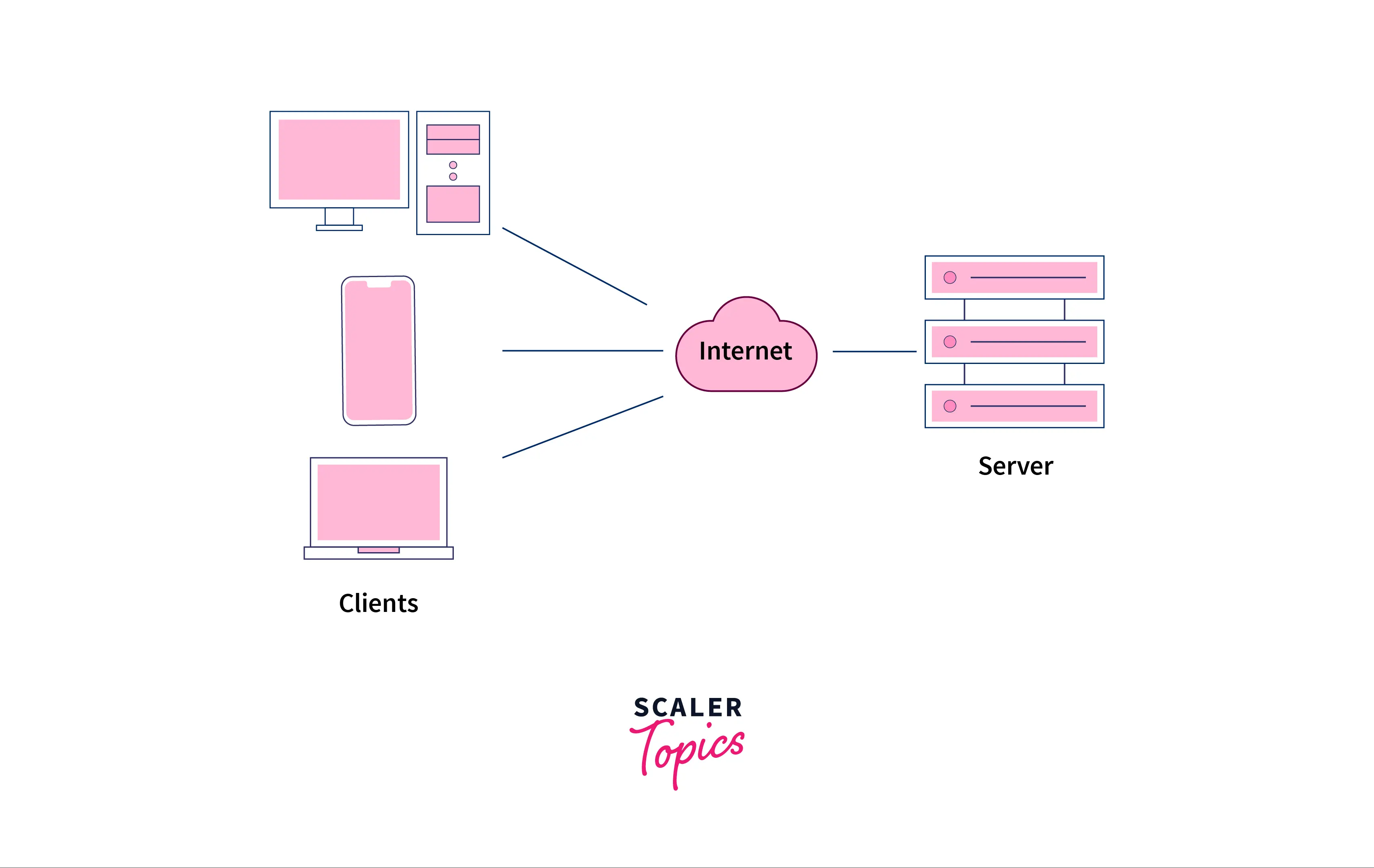World Wide Web (WWW)
Overview
The World Wide Web (popularly known as the WWW) is a troupe of web pages or websites that is stored within the web servers. This is a collection of web pages or websites connected to local computer systems with the help of the internet. The World Wide web is used to connect people through images, text pages, videos, digital content, etc.
The World Wide Web enables a user who is using their computer system or mobile devices to access the content of various sites over the internet network.
The World Wide Web runs on a set of rules that determine how data is transmitted between different devices in the same network. These are known as protocols. There are security risks that affect Web servers, the local area networks that host Web sites, and even innocent users of Web browsers. The risks are most severe from the Webmaster's perspective.
What is the World Wide Web?
Imagine we're sitting in our room and suddenly we get the urge to watch a random solar system video. Thus we'll open our computer, visit YouTube, and search for a solar system video.
In this process, we can observe that we are accessing content that is provided by someone else over a common network. In other words, we are accessing data over the network. This is basically what the World Wide Web is. According to definition
The World Wide Web popularly known as WWW, W3, or the Web is an interconnected system of public webpages accessible through the Internet.
The Web is not the same as the Internet : the Web is one of many applications built on top of the Internet.
The following image depicts the world wide web :

History of the World Wide Web
The history of the World Wide Web is associated with Tim Berners Lee. After graduating from Oxford University, the English computer scientist started working with CERN (Conseil Européen pour la Recherche Nucléaire or European Council for Nuclear Research), the large particle physics laboratory near Geneva, Switzerland, as a software engineer. While his term at CERN he discovered that there was a problem in data sharing among different scientists due to the unavailability of a common network.
- In March 1989, a proposal was laid out by Tim laid, known as *' Information Management: A Proposal, proposing the existence of a common network to share data. This was rejected by the CERN.
- In September 1990, the initial work on the web started.
- In October 1990 : The three fundamental technologies of the web were written. These included HTML, URI, and HTTP.
- By the end of 1990, the first web page was available on the open internet.
- In 1991, the web community was opened to people outside CERN.
- In 1994, the World Wide Web Consortium was founded, it is an international community devoted to developing open web standards.
- At present most of the users are using the Web 2.0 version. Web 3.0 has been proposed that focuses on using a machine-based understanding of data to provide a data-driven and Semantic Web.
How Does the World Wide Web Work?
Now that we have an understanding of what the World Wide Web is, in this section, we will see the workings of the World Wide Web.
The working of the World Wide Web is based on the client-server model. A web server is software and hardware that uses HTTP (Hypertext Transfer Protocol) and other protocols to respond to client requests made over the World Wide Web.
A web server is used to store data or information and this data is transferred to the computer of the user when a user on the same network requests data or information. The computer system of the user that is requesting this data is known as a client. This exchange of data is usually carried out by the browser present on our computer systems. It allows us to access the retrieved data in the form of documents from the web.

Evolution of the World Wide Web
Over the years the world wide web has evolved a lot. The continuous development work on the World Wide Web has made it vast and contemporary.
The web has primarily seen three generations:
Web 1.0
Web 1.0 is referred to as the beginning stage of the World Wide Web evolution. It is the first version of the web. This phase included the presence of minimal content over the web with the majority of the users who were consuming the content. Most of the web pages were static and were hosted either on free web hosting providers or on ISP-run web servers.
In Web 1.0 advertisements on websites while surfing the internet are banned. Also, in Web 1.0, Ofoto is an online digital photography website, on which users can store, share, view, and print digital pictures. Web 1.0 is a content delivery network (CDN) that enables the showcase of the piece of information on the websites. It can be used as a personal website. It costs the user as per pages viewed. It has directories that enable users to retrieve a particular piece of information. The era of Web 1.0 was roughly from to .
Following are the features of Web 1.0:
- Web 1.0 had static pages.
- The server file system was used to serve content (for example read-only articles, or static web pages).
- The positioning and alignment of the elements on a page were done using tables or frames.
Web 2.0
Since Web 1.0 lacked the facilities of user-generated content, usability, and interoperability for end-users, to tackle these issues and provide features like dynamic websites, APIs, etc., Web 2.0 was introduced.
Web 2.0 is not a change but a transition of Web 1.0 from static and riveted content to dynamic content. With this transition, it became relatively easier for the user of the web to create their content on the web and share it with others. The web browser technologies are used in Web 2.0 development and it includes AJAX and JavaScript frameworks. Recently, AJAX and JavaScript frameworks have become a very popular means of creating Web 2.0 sites.
Following are the features of Web 1.0 :
- It allows the users to retrieve and classify the information collectively.
- The content is user-responsive and dynamic thus making the website device friendly in terms of alignment and sizing.
- APIs were introduced to allow self-usage, such as by a software application.
- Allowed users to put content over the web. Social media etc. was introduced.
Web 3.0
Web 3.0 is the latest advancement in the World Wide Web.
Web 3.0 refers to the evolution of web utilization and interaction which includes altering the Web into a database, with the integration of DLT (Distributed Ledger Technology blockchain is an example), and that data can help to make Smart Contracts based on the needs of the individual.
Web 3.0 has brought multiple evolutions to web interaction and usage. The main idea behind Web 3.0 is that the data is not owned by a certain authority but is shared among the web.
Features of WWW
The World Wide Web provides the following features:
HyperText Information System
Hypertext is a system for linking related text documents that allow the participation of multiple users. In a hypertext document, any word or phrase can be “hyperlinked” to information related to that word or phrase residing in the same document or another document.
Cross-Platform
Cross-platform apps are the ones with built-in web languages (like JavaScript) that can be later pulled (f.e. through React Native) as native apps able to work on any operating system and device.
Cross-platform apps are great when you want to : Build your app 50% faster. Build one app for both iOS and Android.
Distributed
WWW is a distributed client-server service. In this, a client can access the services from a server using a browser. These services are usually distributed over many locations called sites or websites. From the user's point of view, the web consists of a vast worldwide collection of documents called web pages.
Open Standards and Open Source
WWW provides the features of Open standards and Open source. An open standard is a standard that is freely available for adoption, implementation, and updates. A few famous examples of open standards are XML, SQL, and HTML.
Businesses within an industry share open standards because this allows them to bring huge value to both themselves and their customers.
Open-source software is computer software that is released under a license in which the copyright holder grants users the rights to use, study, change, and distribute the software and its source code to anyone and for any purpose.
What are Client and Server?
Earlier we read that the World Wide Web works on the client-server model. In this section, we will learn what exactly are client and server and how the client-server model works.
The Client-server model is a distributed application structure that partitions tasks or workloads between the providers of a resource or service, called servers, and service requesters called clients.
There can exist multiple clients interacting with one server or one client interacting with multiple servers or multiple clients interacting with multiple servers within the world wide web.
When a client wants to access data, it would send requests to the web servers using his computer through the internet. The server will accept the request and start processing it. After that, the data packets are sent back to the client by the server.
The following picture depicts the client-server model:

In the above figure, we can see that multiple clients of different forms are interacting with a server through the internet. This whole setup can be interpreted as web.
Conclusion
- The World Wide Web is an interconnected system of public web pages accessible through the Internet.
- The World Wide Web follows the client-server model.
- The World Wide Web provides features like HyperText Information System, Cross-Platform, Distributed, open standards, open-source, etc.
